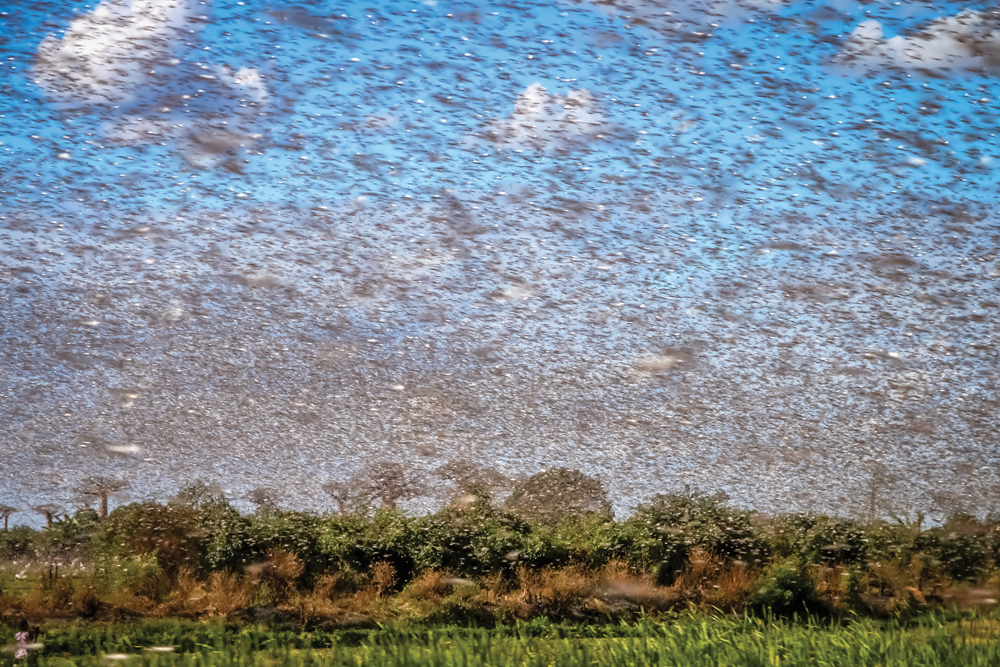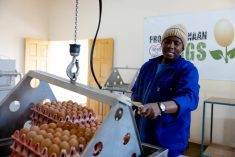MarketsFarm – Locust swarms reaching levels not seen in decades are raising concerns over food security from Africa to as far east as India, according to reports from the Food and Agriculture Organization (FAO) of the United Nations.
The locust crisis has intensified since the beginning of 2020, but got its start in 2018 when back-to-back cyclones brought moisture to the insects’ breeding grounds in the Arabian Peninsula and southwest Asia. The moisture created ideal breeding conditions for the desert locust, with many countries now at the point of declaring national emergencies to deal with the threat.
Read Also

Farmer-friendly nematodes: Tiny worms for big canola pest control
Not all nematodes are equal in farm fields. Beneficial species of the tiny soil-dwelling worms could one day help beat back damaging canola insect pests like diamondback moth on the Canadian Prairies.
There can be as many as 80 million locusts in a square kilometre, and swarms can travel up to 150 kilometres a day while consuming their own body weight in food. The FAO estimates that 13 million people are already facing food insecurity, but that number could rise to 25 million. The Horn of Africa is reportedly dealing with its most serious locust crisis in 25 years and Kenya in particular is facing its worst upsurge in locusts in 70 years.
One square kilometre of desert locusts can eat as much food as 35,000 people in a single day, and the FAO estimates that under the right weather conditions the population could multiply 500 times in the next six months.
As of the end of February, the FAO was reporting that Ethiopia, Kenya and Somalia were facing the most serious threats to crops in Africa, with neighbouring countries also at risk. Crops across the Red Sea in Yemen and Saudi Arabia were also threatened, while winds were also bringing swarms to countries around the Persian Gulf.
“The situation remains extremely alarming in the Horn of Africa, specifically Kenya, Ethiopia and Somalia where widespread breeding is in progress and new swarms are expected to form in the coming weeks,” said the FAO. “In the past few days, there has been a significant movement of swarms over the Arabian Peninsula, unrelated to the Horn of Africa, that reached both sides of the Persian Gulf.”
Locust swarms are also decimating cropland in Pakistan and northwestern India, with the increased insect activity there heightening concerns in the global grain markets.
Aerial spraying can stop the swarms, but a lack of resources has hindered preventive measures. The FAO is currently requesting US$138 million to help in the fight, with US$33 million raised so far. The Bill and Melinda Gates Foundation announced a US$10-million donation to the FAO on Feb. 24.
In addition to traditional aerial spraying to stop the locusts, experimental measures with everything from drones to ducks have also been reported.




















